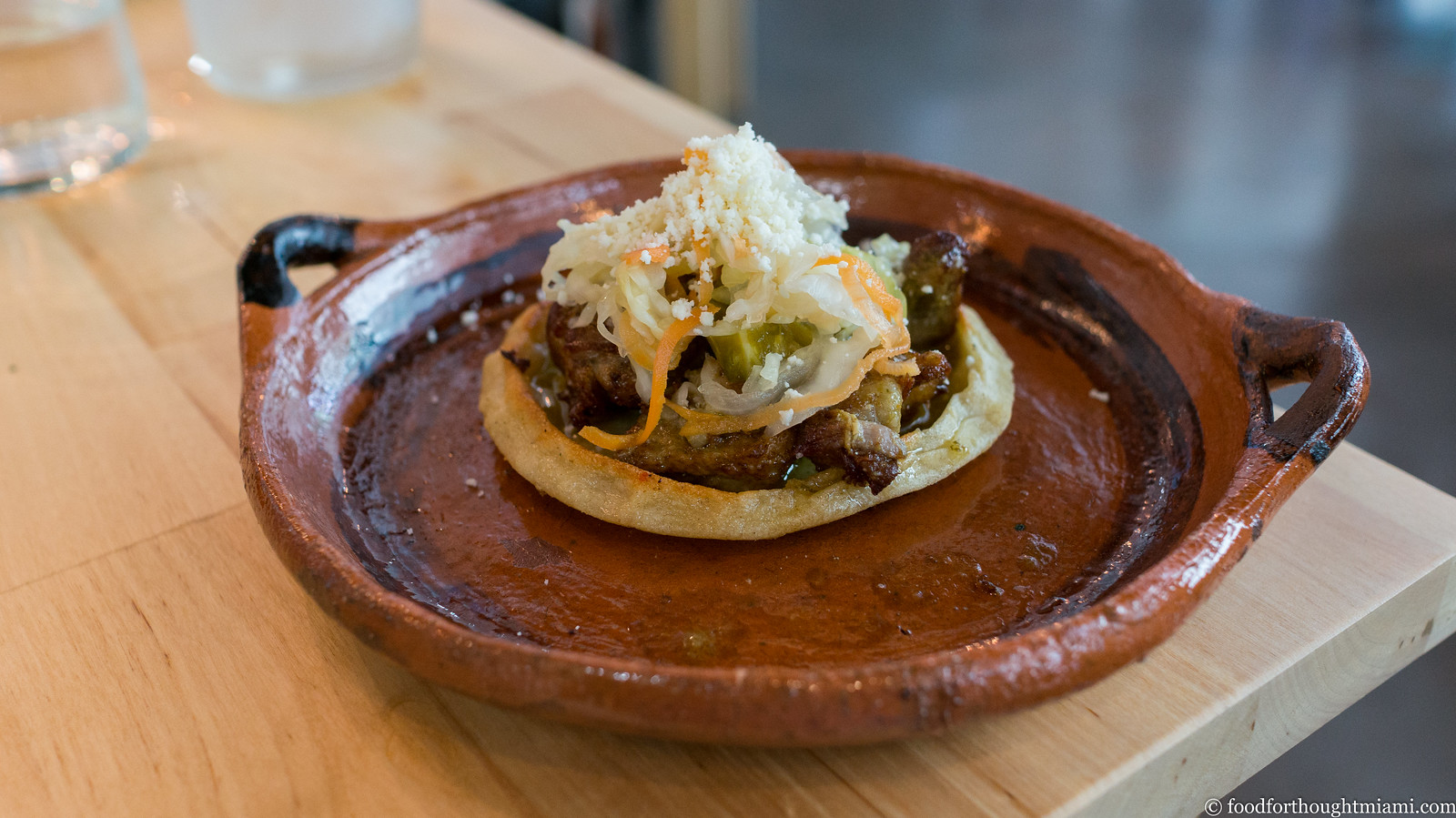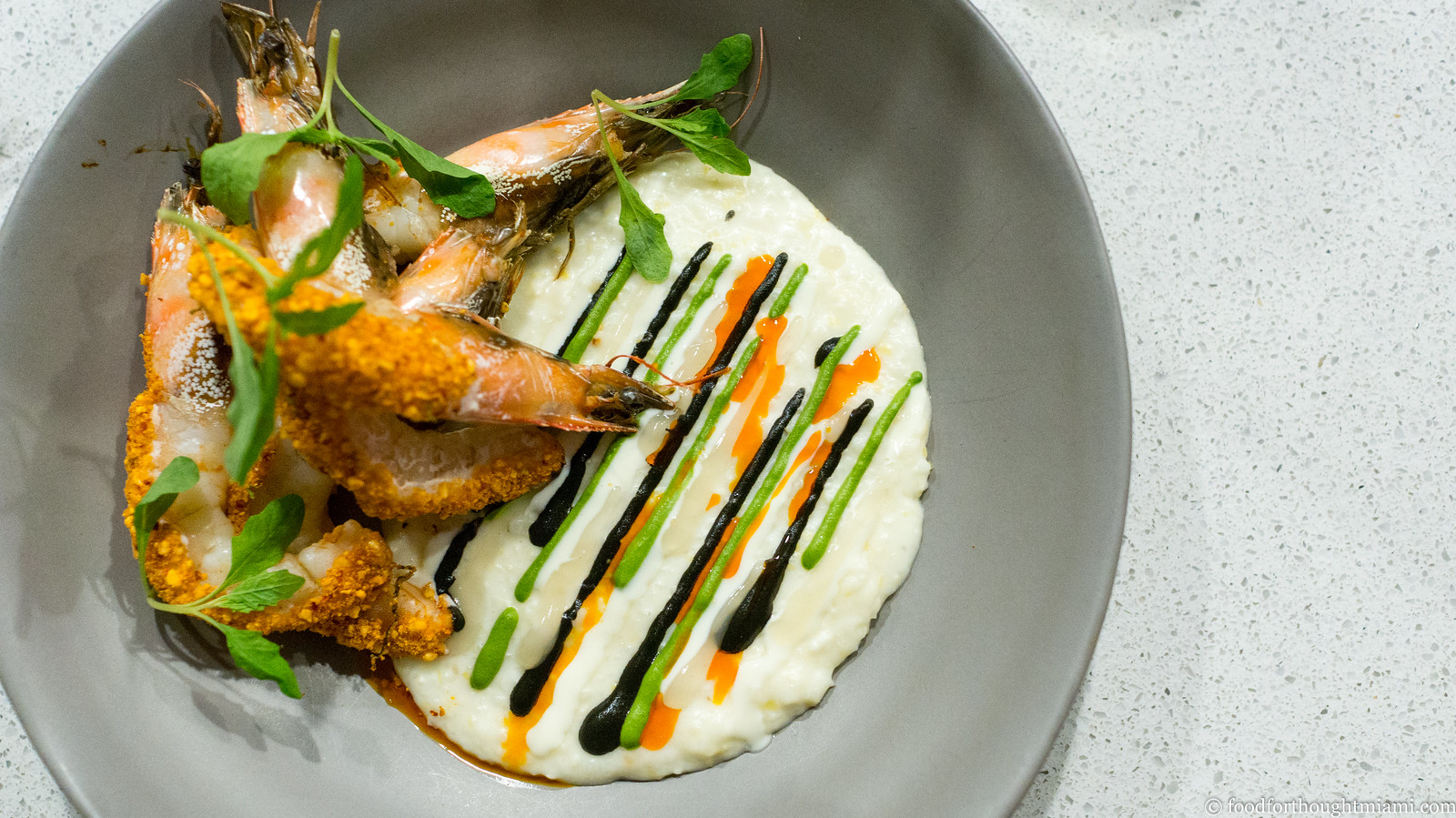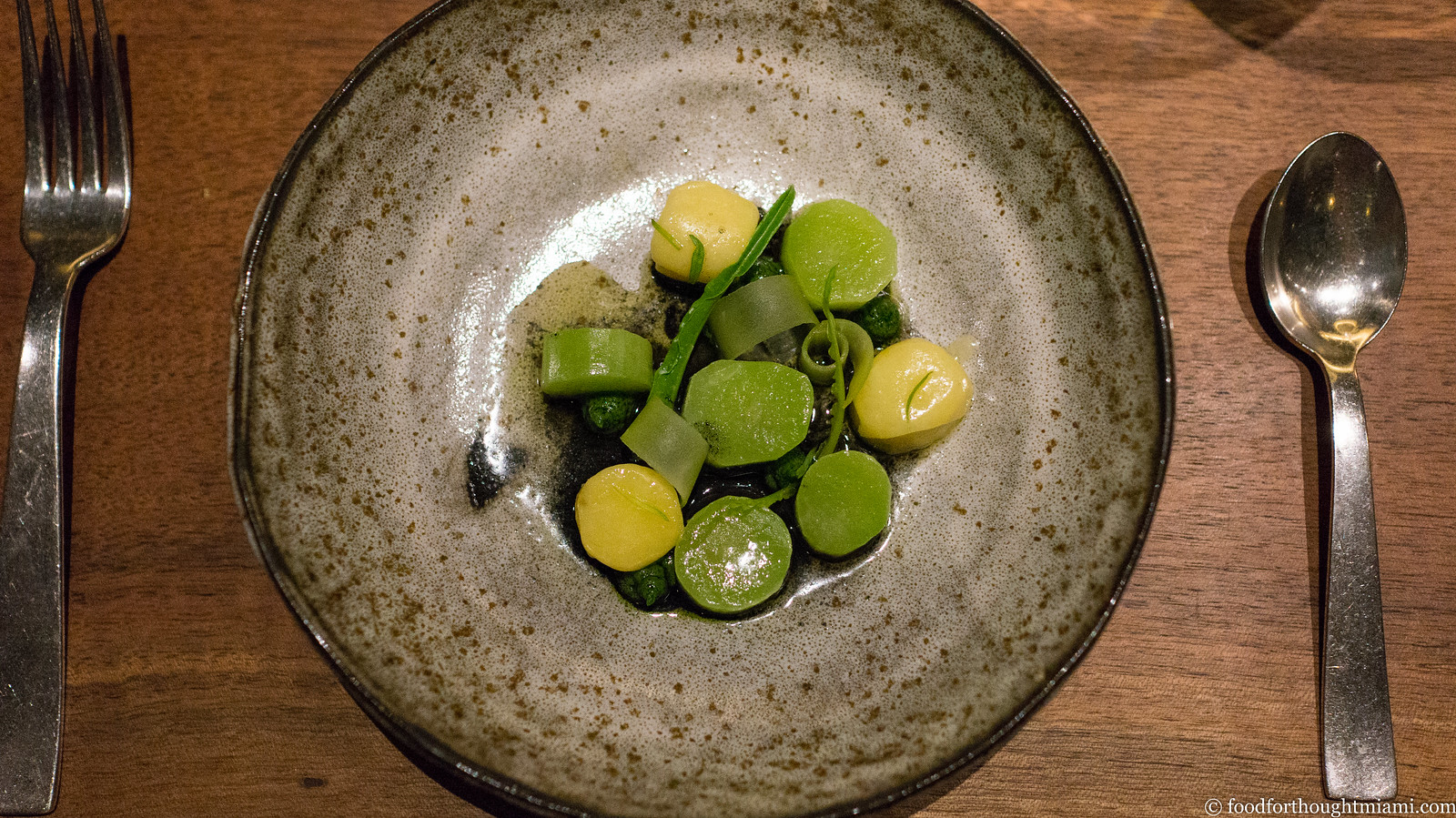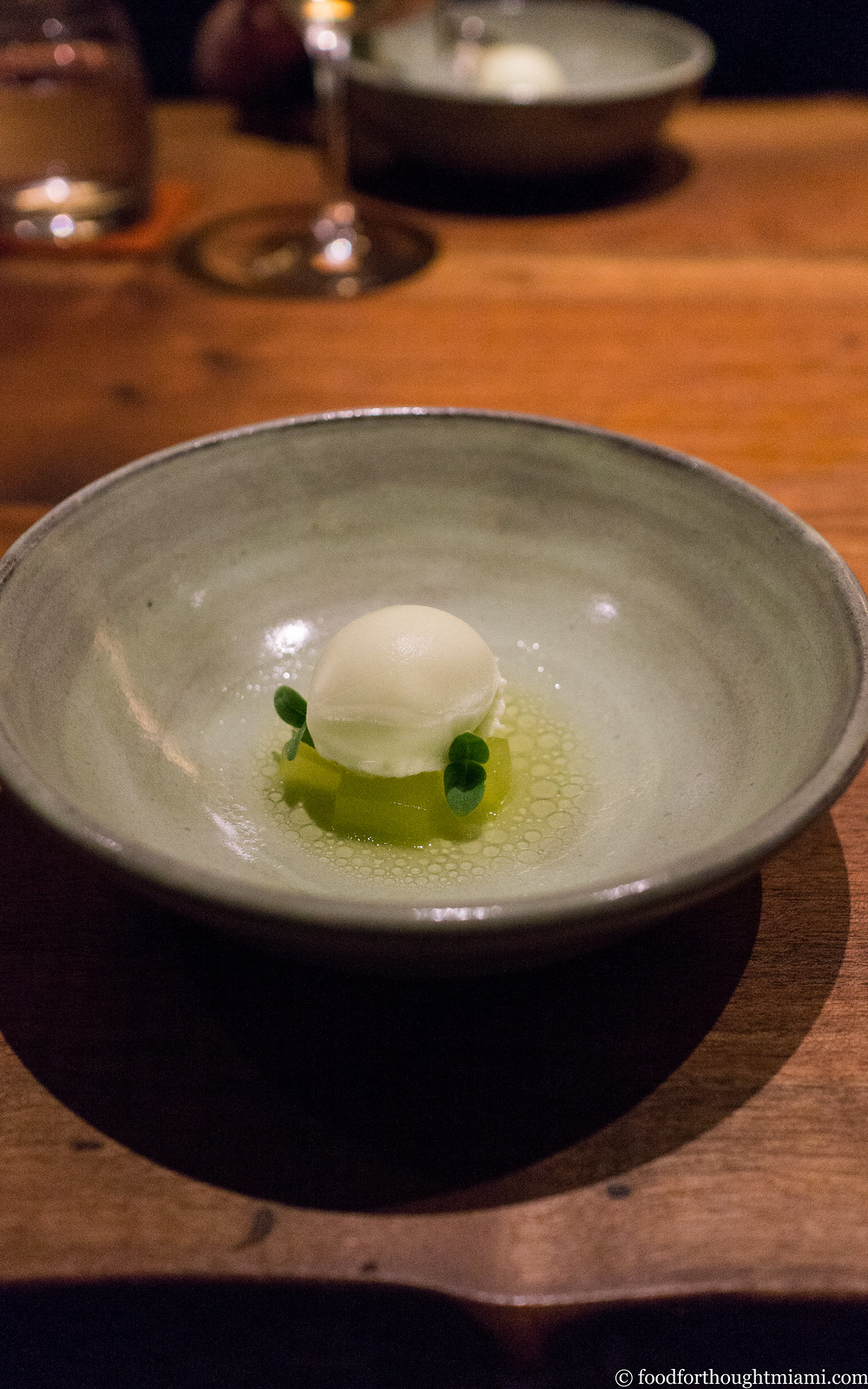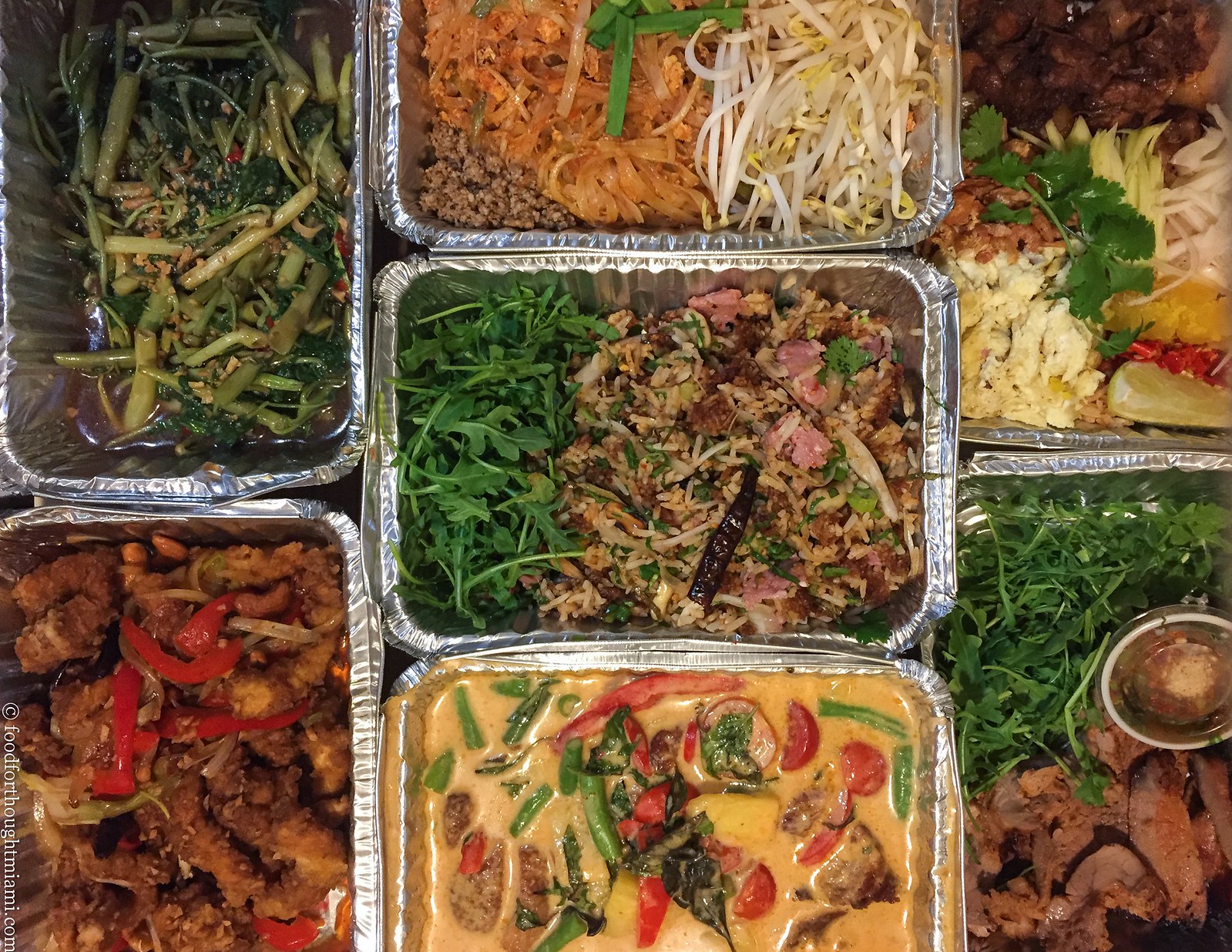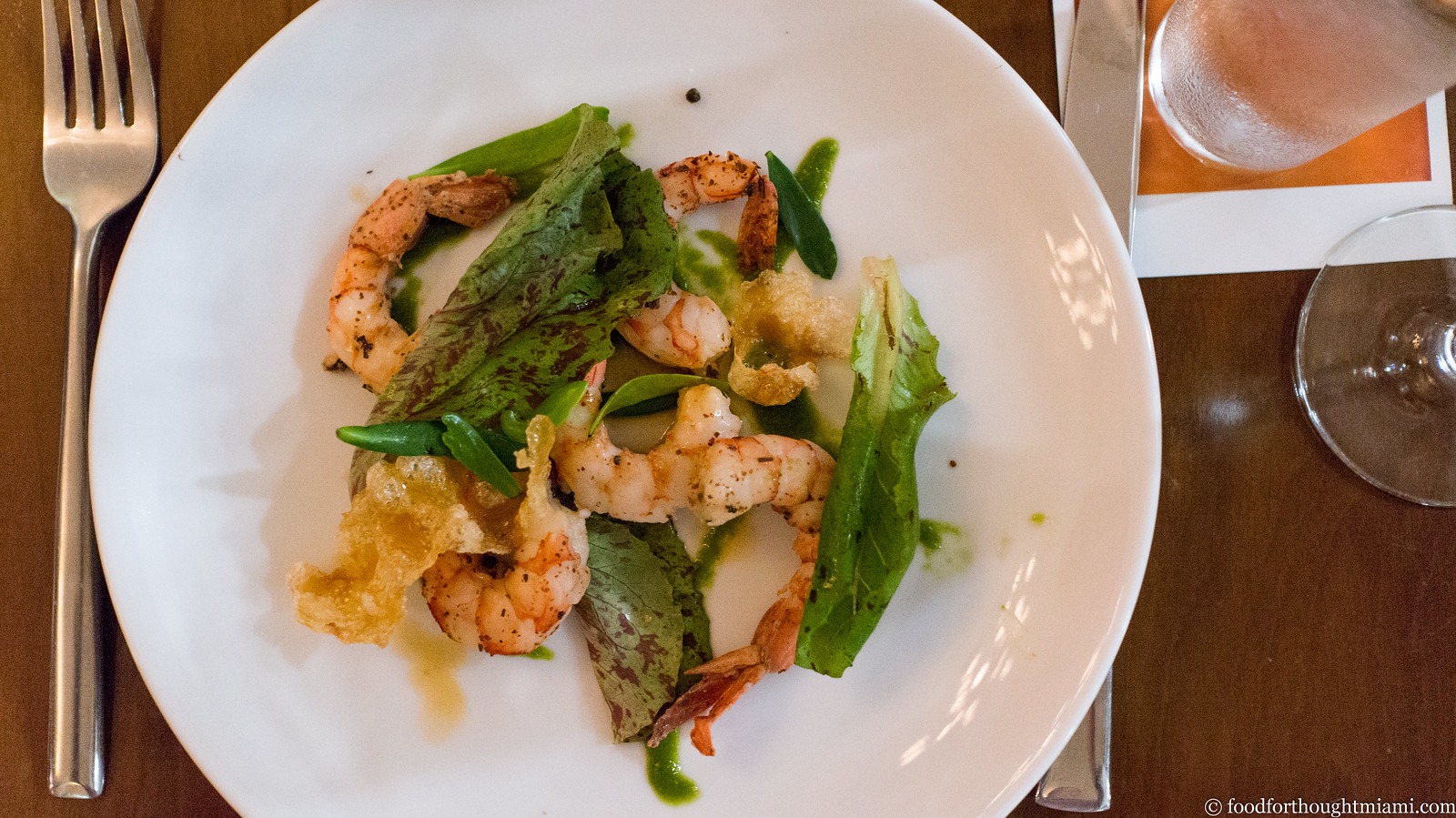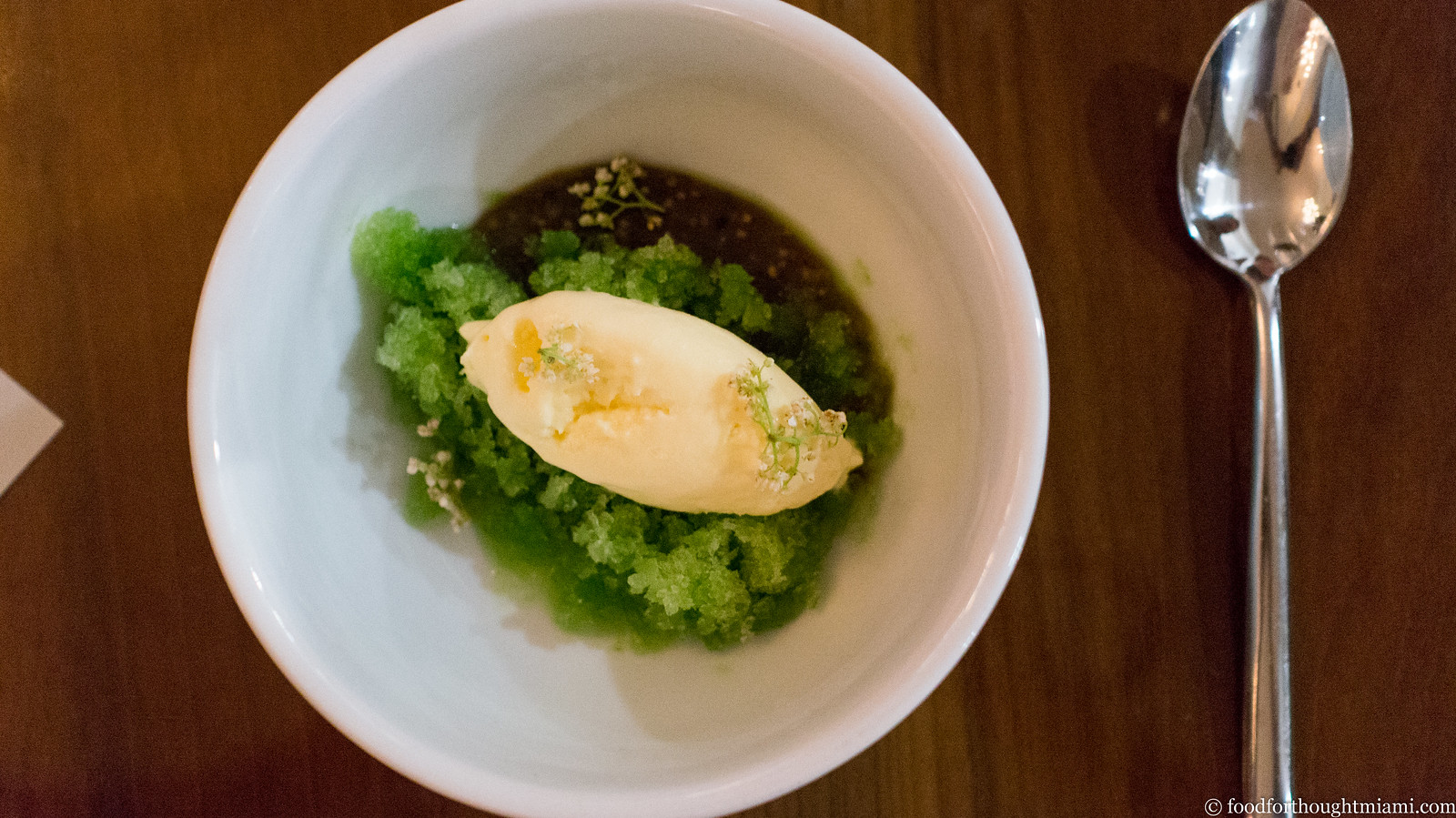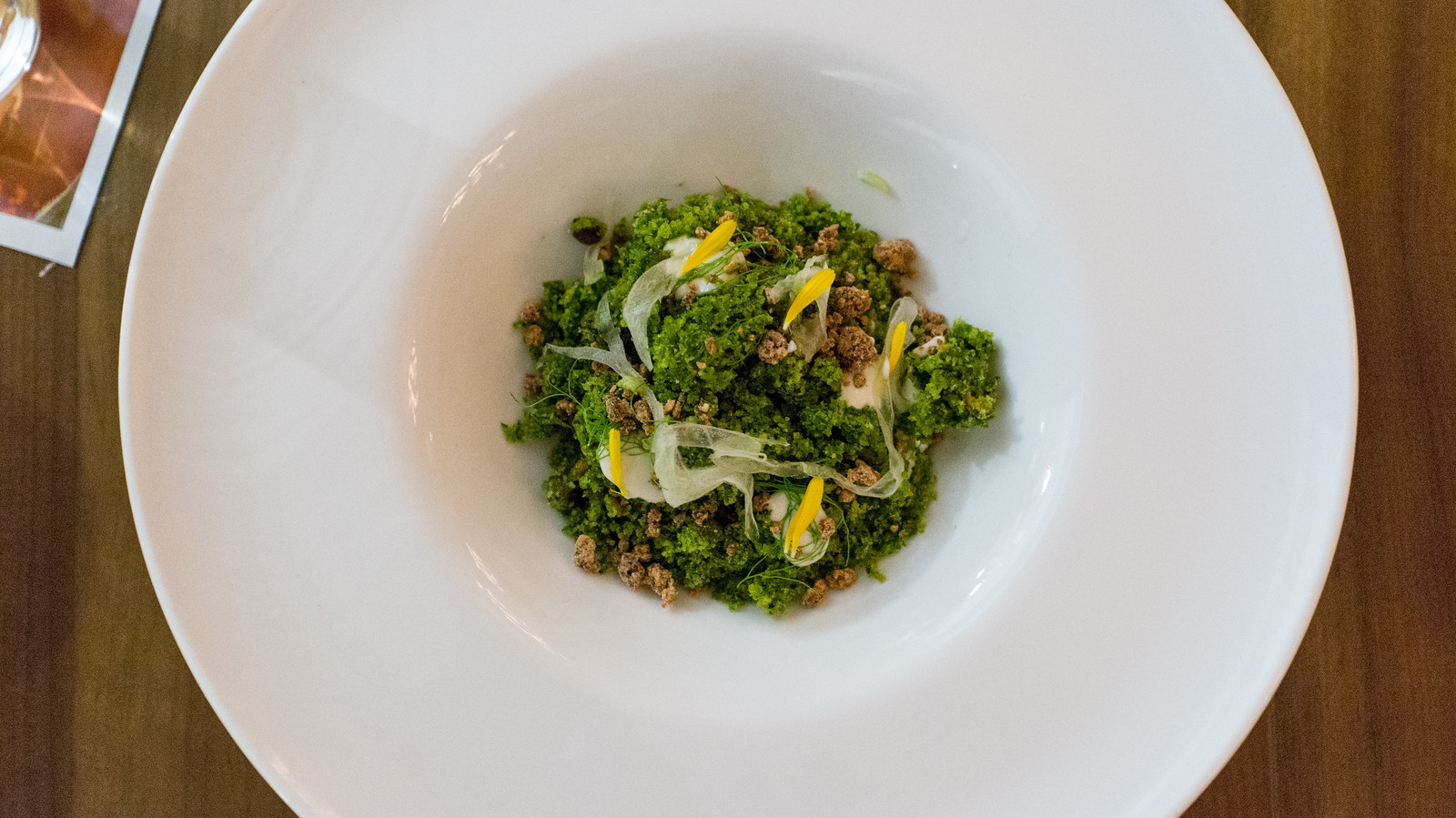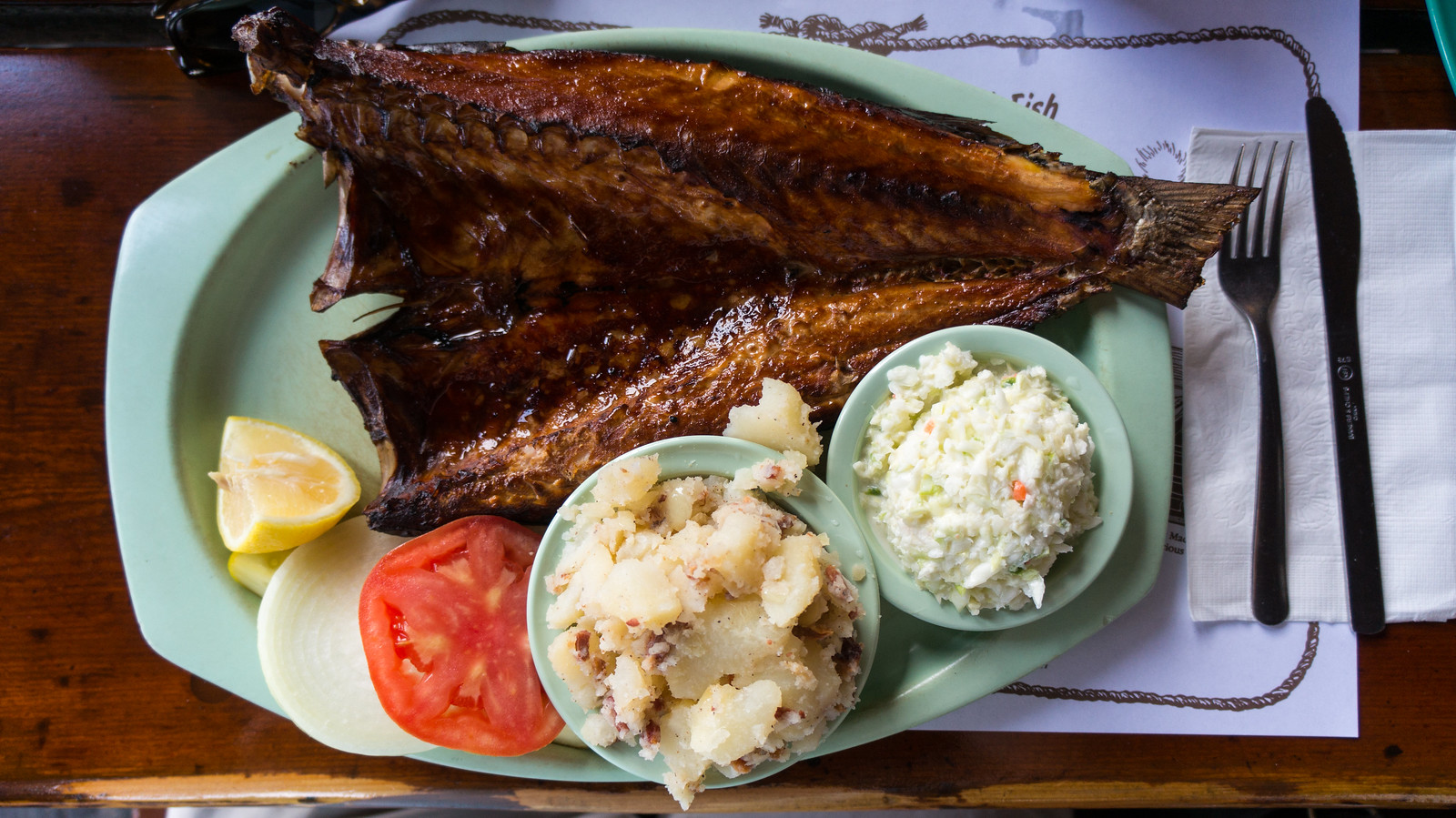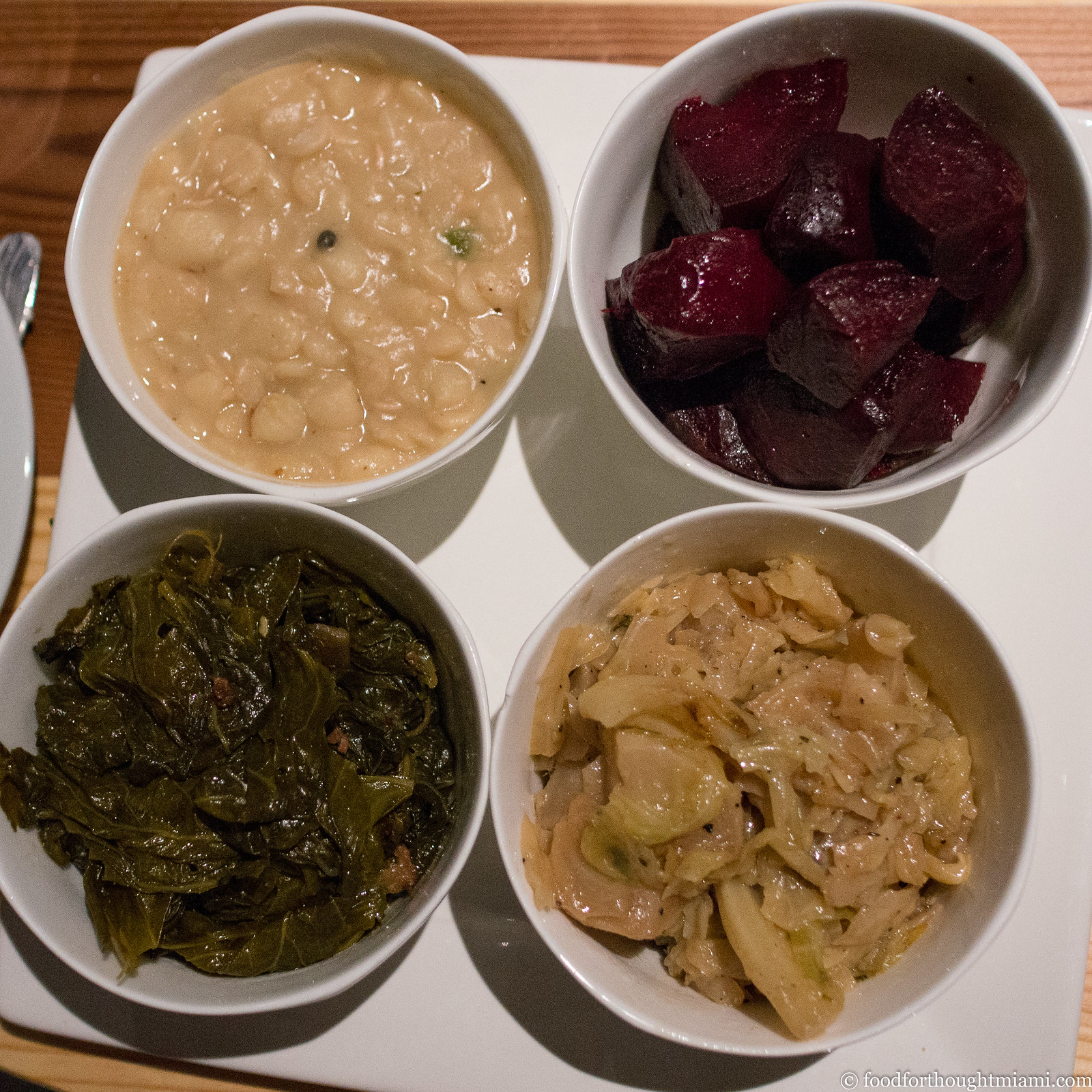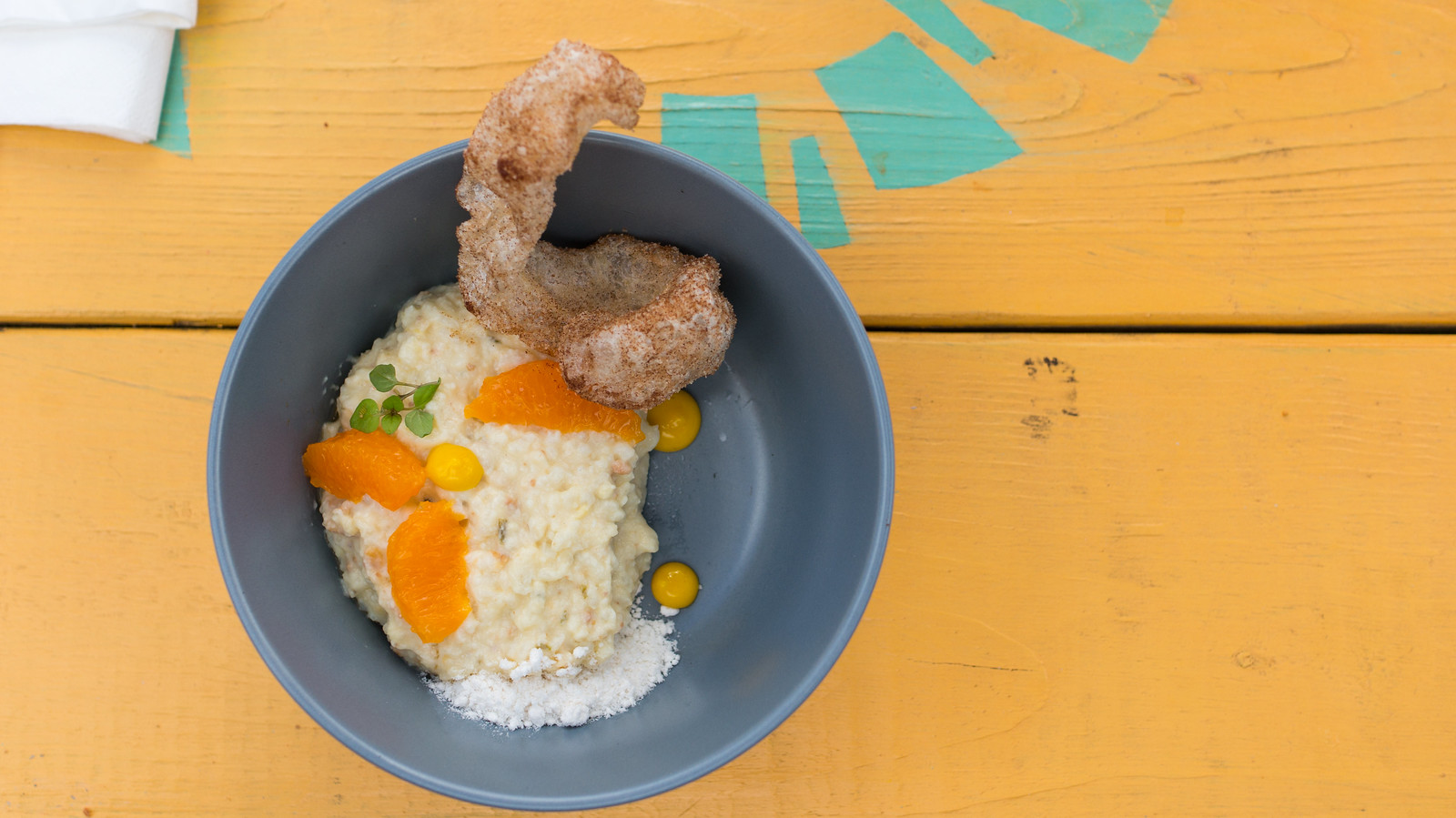Once again, despite the title, this makes no claim as being the "best" of anything other than the things I had the good fortune to eat over the past year. There are oodles of intriguing new restaurants just in South Florida that I've not yet made it to, or only started to get to know, much less the broader dining universe out there. These appear in roughly chronological order.
Gordita, Haitian Griots and Pikliz, Cotija, Raw Vegan Verde - Centro Taco (Downtown Miami) (see all my pictures from Centro Taco)
This Mexican-Haitian mash-up was darn near perfect: a crisp, corn-y masa shell filled with tender, burnished-edged fried pork, a tangy, spicy cabbage slaw, a dollop of salsa verde and a sprinkling of cotija cheese. Before my first visit, I was by no means convinced that Miami needed another taco shop. But it can always use more like this. (I guess I was wrong – Centro Taco closed after only a couple months, but Chef Richard Hales is looking to reopen in another spot. I hope that happens soon.)
Cape Canaveral Prawns, Tajin Crust, Grits, Mole Verde, Lime Crema, Huitlacoche - Alter (Wynwood Miami) (read my thoughts and see all my pictures from Alter)
I found another favorite dish on a visit to Alter in August: the tajin-crusted Cape Canaveral prawns, strewn over a bed of creamy corn grits lashed with stripes of mole verde, lime crema, and huitlacoche. It's a beautiful combination – like a next-generation Mexican shrimp 'n' grits – but what really elevates it is the quality of those prawns, tender and juicy underneath their chile and citrus coating, their heads bursting with oceanic goodness when chewed or squeezed.
Caviar, Smoked Oil Poached Egg, Creme Fraiche; Celtuce, Just Dug Potatoes, Comté, Burnt Hay, Tarragon; Musk Melon, Coconut, Lemon Flavors - Coi (San Francisco) (read my thoughts and see all my pictures from Coi)
Here are three dishes from a meal at Daniel Patterson's restaurant Coi, shortly after the chef announced that he would stepping out of the kitchen at the end of the year. He's bringing in a wonderful chef to take over – Matthew Kirkley, who served me a great meal at Chicago's L2O late last year – but I'm glad to have had a chance to experience Patterson's cooking at Coi. From Patterson's book:
Coi is part of a well-established tradition of restaurants that serve expensive tasting menus. We are mindful of that history, but there are some aspects of an haute cuisine dining experience that feel more symbolic than heartfelt, like building the menu around a procession of luxury ingredients. Products like truffles and caviar are expensive, but they aren't hard to find or challenging to prepare. They don't carry any particular emotional value for me, just the wan connotation of a bygone era when waiters wore white gloves. Nothing wrong with that, it's just not how I cook.Well, sometimes exceptions can be made. I, for one, would never turn down this mound of caviar, served over a poached egg yolk nestled next to some silky creme fraiche sprinkled with chives. Again there's another little surprise: the gooey yolk has been imbued with the flavor of the smoked oil in which it was poached, the combination of roe and smoke bringing to mind the grill-smoked caviar served by Victor Arguinzoniz at Etxebarri.
Another dish from the Coi "greatest hits" collection. The primary ingredient is celtuce, featured both in thickly sliced discs and thin ribbons of its stalk. It has the hearty snap of a broccoli stem, and a delicately bittersweet flavor somewhere in the neighborhood of lettuce, celery and asparagus. Freshly dug potatoes are cooked until just tender, and crowned with caps of nutty, buttery melted comté cheese. These sit over an oil blackened with powdered burnt hay. Those black and charred aromas are brought back to green and fresh by a few wispy leaves of tarragon. "Coi" is an archaic French word meaning "quiet," and Patterson's cooking voice can be quiet, subtle, understated. Sometimes you have to listen closely. If you do so, in this dish maybe you'll hear something that sounds like a field of grass blown by the wind, with all these variations on the vegetal tastes of the pasture.
Then the next bite soothes. Gorgeously fragrant, sweet cubes of musk melon swim in a soup of their juices, intermingled with lemon flavors (something herbaceous here: lemon verbena?) and topped with a scoop of coconut sorbet. It's simple. And stunning.
(continued ...)

